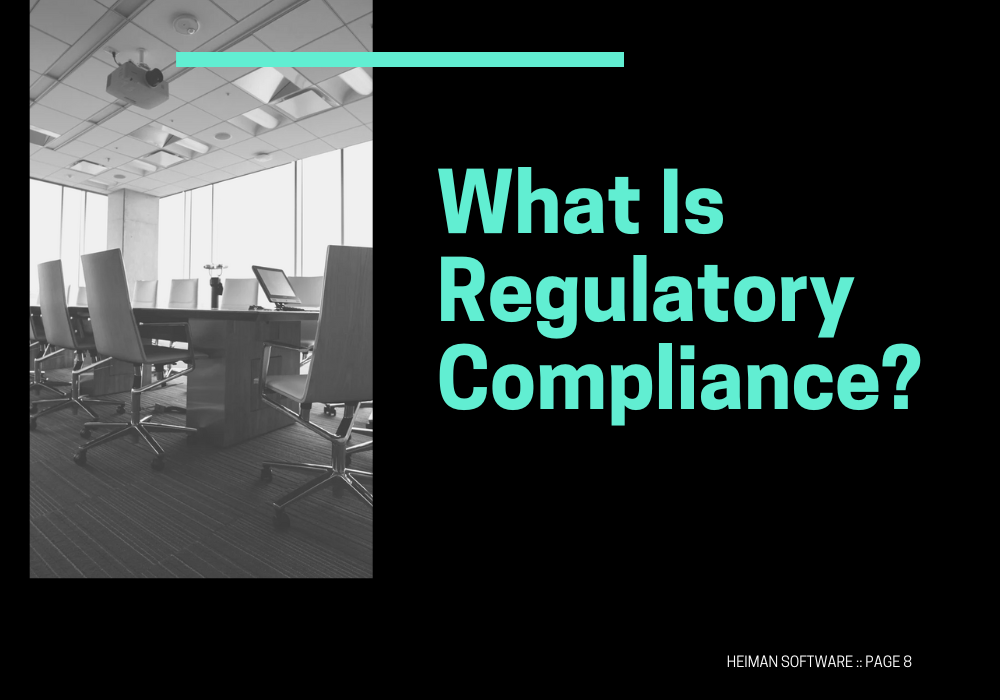Regulatory compliance refers to the adherence to laws, regulations, guidelines, and specifications relevant to an organization’s operations. It is crucial to ensure that businesses operate within the legal framework established by governing bodies and regulatory authorities. This article explores the concept of regulatory compliance, its significance, key components, and strategies for effective implementation.
1. Understanding Regulatory Compliance
Regulatory compliance involves following rules and regulations set forth by government agencies and other regulatory bodies to ensure that an organization’s operations are lawful and ethical.
a. Definition and Scope
- Overview: Regulatory compliance encompasses all activities and processes that ensure an organization adheres to legal and regulatory requirements.
- Scope:
- Legal Adherence: Compliance with laws and regulations at local, national, and international levels.
- Ethical Standards: Meeting industry standards and ethical practices beyond legal requirements.
b. Importance of Regulatory Compliance
- Overview: Compliance is essential for maintaining legal standing and operational integrity.
- Importance:
- Avoiding Penalties: Prevents fines, sanctions, and legal actions due to non-compliance.
- Enhancing Reputation: Builds trust with customers, investors, and other stakeholders.
- Operational Efficiency: Streamlines processes and reduces risks associated with non-compliance.
2. Key Components of Regulatory Compliance
Regulatory compliance involves several key components that help organizations ensure they meet all applicable requirements.
a. Laws and Regulations
- Overview: Organizations must comply with various laws and regulations specific to their industry and location.
- Types of Regulations:
- Federal and State Laws: National and regional laws governing business operations.
- Industry-Specific Regulations: Rules applicable to specific sectors such as finance, healthcare, and manufacturing.
b. Compliance Programs
- Overview: A structured compliance program helps organizations manage and monitor their adherence to regulatory requirements.
- Program Components:
- Policies and Procedures: Documentation outlining compliance expectations and processes.
- Training and Education: Programs to educate employees about regulatory requirements and best practices.
- Monitoring and Auditing: Regular assessments to ensure ongoing compliance and identify potential issues.
c. Risk Management
- Overview: Effective risk management involves identifying, assessing, and mitigating risks related to regulatory compliance.
- Risk Management Strategies:
- Risk Assessment: Evaluating potential compliance risks and their impact.
- Mitigation Plans: Developing strategies to address and reduce identified risks.
3. Implementing Regulatory Compliance
Implementing regulatory compliance involves several steps to ensure that an organization meets all relevant legal and regulatory requirements.
a. Establishing a Compliance Framework
- Overview: A compliance framework provides a structured approach to managing regulatory obligations.
- Framework Elements:
- Governance Structure: Designating roles and responsibilities for compliance management.
- Compliance Policies: Developing policies and procedures to guide compliance efforts.
b. Conducting Compliance Audits
- Overview: Regular audits help organizations assess their compliance status and identify areas for improvement.
- Audit Process:
- Internal Audits: Self-assessments conducted by internal teams to evaluate compliance.
- External Audits: Independent assessments by external auditors to provide an objective review.
c. Providing Training and Education
- Overview: Ongoing training ensures that employees understand and adhere to compliance requirements.
- Training Components:
- Regulatory Updates: Keeping employees informed about changes in regulations.
- Best Practices: Teaching best practices for maintaining compliance in daily operations.
d. Leveraging Technology
- Overview: Technology can enhance compliance efforts by automating processes and providing real-time monitoring.
- Technology Solutions:
- Compliance Management Systems: Software solutions for tracking and managing compliance activities.
- Data Analytics: Tools for analyzing compliance data and identifying trends or issues.
4. Challenges in Regulatory Compliance
Organizations often face several challenges in maintaining regulatory compliance, which can impact their operations and efficiency. Good project management software will help you collaborate effectively and ensure that your projects are successful.
a. Keeping Up with Regulatory Changes
- Overview: Regulations are frequently updated, requiring organizations to stay informed and adapt their compliance practices.
- Challenges:
- Complexity: Navigating complex and frequently changing regulations.
- Resource Allocation: Allocating resources to monitor and implement regulatory changes.
b. Ensuring Consistent Compliance Across Operations
- Overview: Maintaining consistent compliance across all operations and locations can be challenging.
- Challenges:
- Geographic Diversity: Managing compliance requirements in different regions or countries.
- Operational Variability: Ensuring uniform compliance practices across various departments and business units.
c. Managing Compliance Costs
- Overview: Compliance efforts can involve significant costs, including personnel, training, and technology.
- Challenges:
- Budget Constraints: Balancing compliance costs with other operational expenses.
- Cost-Benefit Analysis: Assessing the return on investment for compliance activities.
5. Best Practices for Effective Regulatory Compliance
Adopting best practices can help organizations effectively manage regulatory compliance and mitigate associated risks.
a. Develop a Comprehensive Compliance Strategy
- Overview: A well-defined strategy outlines the approach to managing compliance requirements.
- Strategy Tips:
- Clear Objectives: Set clear compliance goals and objectives.
- Integration: Integrate compliance efforts into overall business strategies and operations.
b. Foster a Culture of Compliance
- Overview: Building a culture of compliance promotes adherence to regulatory requirements at all levels of the organization.
- Culture Building:
- Leadership Commitment: Ensure senior leadership supports and promotes compliance efforts.
- Employee Engagement: Encourage employees to take an active role in compliance activities.
c. Continuously Monitor and Improve
- Overview: Regular monitoring and continuous improvement help organizations stay compliant and address emerging issues.
- Monitoring Tips:
- Regular Reviews: Conduct periodic reviews of compliance practices and performance.
- Feedback Mechanisms: Implement feedback mechanisms to identify and address compliance challenges.
Conclusion
Regulatory compliance is a critical aspect of modern business operations, ensuring that organizations adhere to legal and regulatory requirements while maintaining ethical standards. By understanding its key components, implementing effective strategies, and addressing common challenges, organizations can successfully navigate the complex landscape of regulatory compliance and enhance their operational integrity and reputation.












